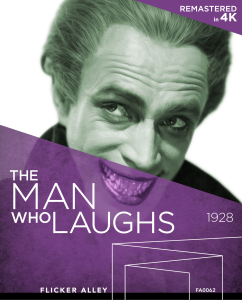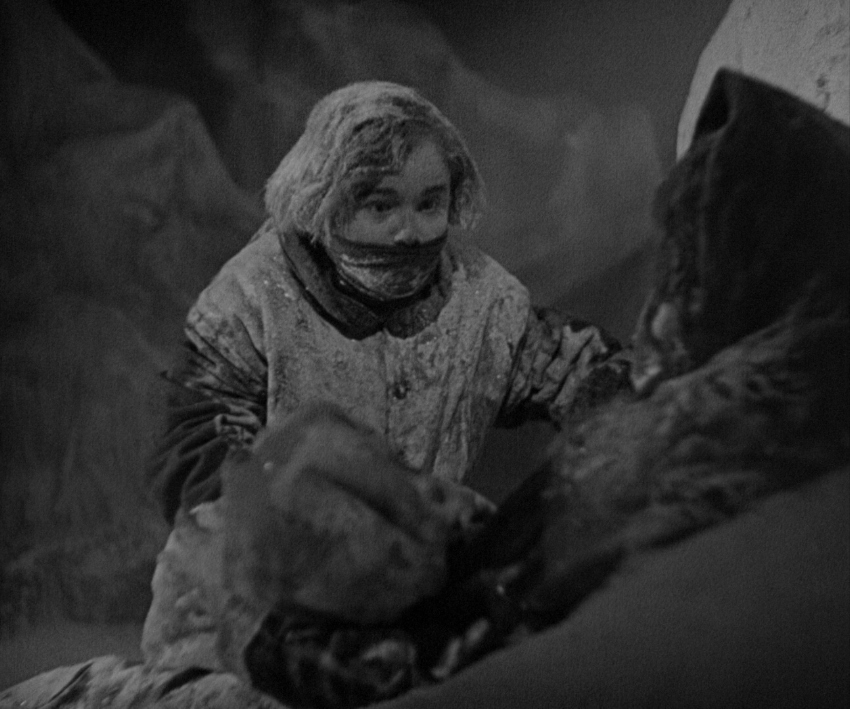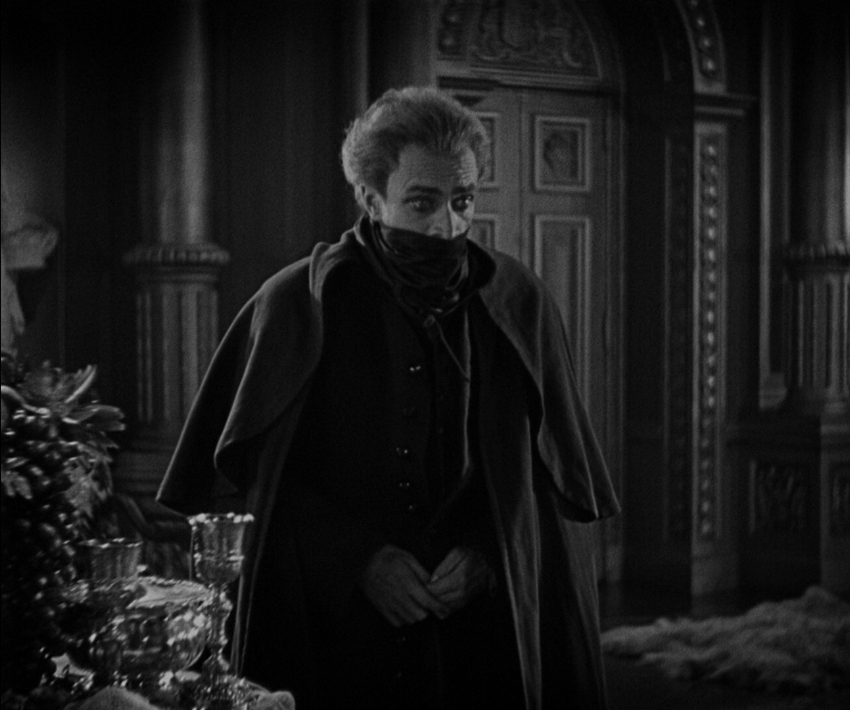The Man Who Laughs

Director: Paul Leni
Screenplay: J. Grubb Alexander, Walter Anthony, Mary McLean, Charles E. Whittaker
Minutes: 110
Year: 1928
Score: 7.27
Release: Flicker Alley
There are few films which have been on my list as long as I can remember having a list. It has been around on video and DVD, it’s probably on youtube (but don’t watch it there). It wasn’t until I saw the poster for The Man Who Laughs buried in the 2019 mini calendar that Flicker Alley sent me, did I knew that I was ready to watch it.
From FlickerAlley.com:
Flicker Alley, in partnership with Universal Pictures, are proud to present Universal Pictures’ new 4K restoration of the 1928 silent classic, The Man Who Laughs, accompanied by a newly recorded orchestral score by the Berklee Silent Film Orchestra. Based on the novel by Victor Hugo, the story centers on the extraordinary adventures of Gwynplaine (Conrad Veidt), whose wide and mirthless grin inspired DC Comics’ legendary Batman villain, the Joker. Veidt’s character has become well known to most cinephiles. Orphaned as a child, Gwynplaine is punished by the king for his father’s transgressions by having his face carved into a hideous grin. Disfigured and alone, Gwynplaine rescues a blind girl named Dea (Mary Philbin), and both end up starring in a sideshow where they fall in love. Because she cannot see, Dea does not know about her lover’s tormented grin.
Masterfully directed by Paul Leni, The Man Who Laughs marks Leni’s penultimate work. Having grown up in Germany during the era of Expressionism, Leni embraces haunting characters, twisted sets, harsh angles, and deep shadows. Heralded as one of the best American silents emulating German Expressionism, The Man Who Laughs presents Leni at his creative directorial peak. Originally released silent, the film was enough of a hit for Universal in 1928 that the studio released it with a synched musical score using the Movietone sound-on-film process, presented here as a secondary audio track.
Part of Universal Pictures’ ongoing silent restoration initiative, The Man Who Laughs honors the studio’s rich film history that has spanned more than a century. The primary source element for this restoration was a 35mm composite fine grain from the Universal Pictures vault, created in 1954 from the nitrate original camera negative. NBCUniversal’s restoration team was able to stabilize and deflicker the film, as well as repair scratches, warps, and dirt. The 4K digital restoration was completed by NBCUniversal StudioPost.
I went into the film completely ignorant of the story and was immediately horrified. This ignorance, of course, does not include knowing that Conrad Veidt’s visage was the basis for visual style of DC Comics’ The Joker. Naturally, as a common refrain, I let this influence my viewing experience.

The film speaks to the lengths that powerful people may go to when they are sufficiently motivated. I would like to pretend that this is a past tense idea, but it really isn’t. You can look at the actions of a certain Korean dictator towards his cousin to see this. Fear of losing power and authority is a powerful motivator. Gwynplaine goes through the wringer twice. First with a physical disfiguring and then with an attempt to socially ostracize him when he uses his frightful visage to his financial benefit. The saddest part is that he shows no interest in political power and only wants love. Gwynplaine is a tragic hero living in the 17th century society. While the inciting incidents are a touch bizarre remembering when they take place may be essential to connect emotionally with the story.
There is something really touching about the story of a young, disfigured, boy rescuing a younger, blind, girl. We all must hope that Ursus, who takes them in, treated them well as they grew up, but the emotional connection between the two children, expressed as love later in the story, is more compelling than the political intrigue which makes up most of the plot.
Considering that the story was written by Victor Hugo who lived through the French Revolution and became a politician after the proverbial heads rolled it is easy to see a possible fable-esque quality to the story, almost propagandistic. Hugo illustrates the corruption and fear of a monarchical system in which the offspring of a political dissident is too treacherous to leave unmolested. But, it can also be seen as escapism for the offspring of the elite. For example, if they are not raised in this lifestyle you can be a theoretically trustworthy member of society.

There is more psychological depth to this film than I am prepared to suss out, but I recognize that is also going beyond the typical consideration with a surface-level essay of a classic German Expressionistic film. It does deserve a slot next to films like Metropolis and The Cabinet of Dr. Caligari in the annals of early German film but seems to be relegated to the visual influences of a comic book serial killer and what Paul Dini used as the basis for much of the Batman: The Animated Series title designs.
Like always, Flicker Alley has issued a very valuable release for silent film fans. It looks incredible and the new score sounds perfect. The visual essay gives some key insights and there is a second audio track that I haven’t listened to yet, but will probably play the next time I watch the film.
Special Features:
- Paul Leni and The Man Who Laughs – A visual essay by film historian and author, John Soister, on Leni’s work at Universal during this period.
- Celebrating Universal’s Masterpiece – A new booklet essay written by renowned film historian and author, Kevin Brownlow.
- Notes On the New Score – A short essay by composer Sonia Coronado of the Berklee School of Music on their new score for The Man Who Laughs.
- Optional Secondary Audio Track – In addition to the new Berklee Silent Film Orchestra score, the film’s original 1928 Movietone score presented here as a secondary audio track.
- Rare Image Gallery – A slide show presentation of vintage marketing materials, trade ads, memorabilia, and more
Director: 9 – Cinematography: 9 – Edit: 6 – Parity: 4 – Main performance: 10 – Else performance: 4 – Score: 9 – Sound: NA – Story: 7 – Script: 6 – Effects: 8 – Design: 9 – Costumes: 10 – Keeps interest: 8 – Lasting: 10